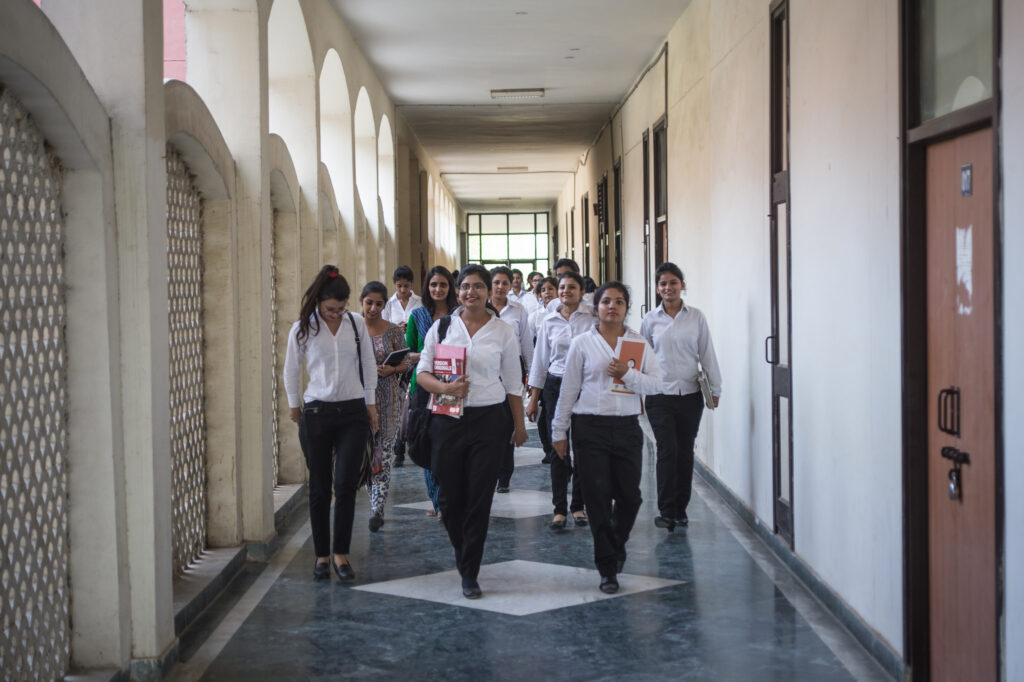Pradeep Kumar Panda

At 25 years old, many women are just starting their careers. The decisions they make affect their economic security, career growth, and work-life balance. This challenging period is only made more difficult in economies where legal environments do not support a woman’s decision to work.
For instance, a woman cannot effectively look for a job or go on an interview if she cannot leave her home without permission. Even if she can go on an interview, will an employer be willing to hire her? If she is hired, will she need to quit if she gets married or has children? If not, will she have to move to a lower-paying job because she must balance work with caring for her family?
And what if the law does not allow her to manage her own assets, affecting her ability to start a business? At the end of her career, she may have to retire earlier than a man, giving her a longer retirement but a smaller pension because she worked for fewer years with lower pay.
Recently published World Bank’s Women, Business and the Law 2019: A Decade of Reform examines these questions by building a time series measuring gender discrimination across 187 economies over the past ten years.
This study employs eight indicators that are structured around women’s interactions with the law as they begin, progress through and end their careers. This way of looking at the data helps align different areas of law with the economic decisions women make at various stages of their working lives. The eight indicators are Going Places, Starting a Job, Getting Paid, Getting Married, and Having Children, Running a Business, Managing Assets and Getting a Pension.
With the understanding that women’s access to employment and entrepreneurial activity is related to many factors, this study focuses on how women must navigate discriminatory laws and regulations at every point in their careers, limiting their equality of opportunity.
To gain new insight into how women’s employment and entrepreneurship choices are affected by legal gender discrimination, this study examines ten years of Women, Business and the Law data through an index structured around the economic decisions women make as they go through different stages of their working lives.
This perspective yields interesting results. Six economies—Belgium, Denmark, France, Latvia, Luxembourg and Sweden—score 100 in the Women, Business and the Law index, meaning they give women and men equal legal rights in the measured areas. A decade ago none of these economies scored 100, indicating they all reformed over the past ten years.
France had the biggest improvement among the top performers, going from a score of 91.88 in the index ten years ago to 100 now by implementing a domestic violence law, providing criminal penalties for workplace sexual harassment and introducing paid parental leave.
The average global score is 74.71, indicating that a typical economy gives women only three-fourths the legal rights of men in the measured areas. However, the average score in the Middle East and North Africa is 47.37, meaning the typical economy in that region gives women less than half the legal rights of men in the measured areas.

Another way to interpret this information is the average economy does not give women equality of opportunity in approximately nine of the 35 data points examined in the index. And in the Middle East and North Africa the average economy does not give women equality of opportunity in approximately 17 of the 35 data points examined.
But there has been significant progress over the past decade. Ten years ago, the global average score was 70.06. Since then, 131 economies have made 274 reforms to laws and regulations increasing gender equality in the areas measured in the index. These reforms led to a 4.65 point increase in the average global score.
Another way to interpret this improvement is that on average, two of the 35 data points measured in the index reformed. These reforms include the 35 economies that introduced laws protecting women from sexual harassment at work, protecting nearly two billion more women than a decade ago.
South Asia had the biggest improvement in average regional score, moving from 50 to 58.36, an increase of 8.36 points. This was followed by East Asia and the Pacific, which went from 64.80 to 70.73, an increase of 5.93 points.
Most top reformers introduced sexual harassment laws or mandated nondiscrimination in access to credit. One-third of the top reforming economies removed job restrictions on night work or on certain job types.
Reforming economies tend to perform better than non-reformers in other measures of gender equality. The economies that reformed under the Women, Business and the Law index also tended to experience bigger increases in the percentage of women working overall, and in the percentage of women working relative to men.
The Women, Business and the Law index is based on statistically significant associations with outcomes related to women’s economic empowerment, in particular with women’s labor force participation as well as with other outcomes of interest.
In addition to the association of indicators with outcomes, Women, Business and the Law employs a thorough review of the economic literature to support each indicator. This review demonstrates how legislation influences women’s equality of opportunity during different phases of their working lives and affects economic outcomes.
Finally, each Women, Business and the Law indicator is supported by the international legal framework on women’s human rights as set out in the Convention on the Elimination of All Forms of Discrimination against Women (CEDAW).
There are certain triggers for reforms benefiting gender equality. Advocacy by women’s groups coupled with public interest litigation is one such trigger as is support from bilateral and international organizations.
These catalysts are very similar to reforms in other areas such as the business environment, where reforms are often driven by internal constituencies or encouraged by international organizations.
Advocacy has also proved critical in India, including in the Supreme Court case of Vishakhavs State of Rajasthan where women’s groups filed public interest litigation to enforce the rights of women in the workplace under the Indian constitution. The case led to the development of the Vishaka Guidelines, which defined sexual harassment in the workplace and provided measures to deal with it.
Another trigger can be a push from bilateral organizations such as the Millennium Challenge Corporation.

This study develops new insight into how women’s employment and entrepreneurship are affected by legal gender discrimination, and in turn how this affects economic outcomes such as women’s participation in the labor market.
The ten-year time-series shines a light on the size of the legal gender gap, how quickly it is closing and where there are regional patterns of reform.
By laying a roadmap for progress overtime and identifying potential areas for reform, this study both celebrates the progress that has been achieved and emphasizes the work that remains. To build on this work, the time-series developed here will be extended in order to further research on the interaction between inequality of opportunity for women and labor market dynamics.
(The author is a New Delhi based Economist)






















